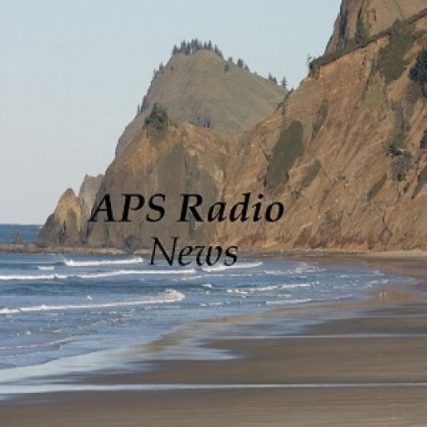economy online news
By Zimo Zhong Associated Press
Hong Kong (AP) — Asia stocks were mostly higher on Tuesday, with investors mainly focusing on a U.S. inflation report and what it means for interest rate cuts by the Federal Reserve. online news
Oil prices advanced while U.S. futures were mixed. The yen weakened, coming close to a 34-year low.
Japan’s benchmark Nikkei 225 gained 0.8% in morning trading to 39,562.94. The yen languished as the U.S. dollar edged up to 151.87 Japanese yen, coming close to a 34-year high of 151.97 yen which it hit in late March.
The Hang Seng in Hong Kong rose for a second day, adding 0.6% to 16,824.36, while the Shanghai Composite index slipped 0.2% to 3,040.00.
In South Korea, the Kospi edged 0.1% lower to 2,714.68, and Australia’s S&P/ASX 200 gained 0.6% to 7,832.10.
An update on the U.S. consumer price index is due later Wednesday.
“The upbeat sentiment stemming from Friday’s jobs report, where indexes surged following wage-growth data suggesting contained inflationary pressures, has set the stage for a white knuckle event as the forthcoming consumer-price index release looms larger than life,” said Stephen Innes, managing partner at SPI Asset Management.
economy online news
U.S. stock indexes were at a virtual standstill Monday as trading calmed after a whirlwind couple of days left them a bit shy of their records.
The S&P 500 edged down less than 0.1% to 5,202.39. The Dow Jones Industrial Average tiptoed less than 0.1% lower to 38,892.80, while the Nasdaq composite inched 5 points higher to 16,253.96.
A string of reports showing inflation and the economy have remained hotter than expected has led investors to delay forecasts for when relief on rates could arrive.
This week has several flashpoints that could further swing expectations. Apart from Wednesday’s report on the inflation that U.S. consumers are feeling at cash registers, there will be reports on inflation at the wholesale level and on expectations for future inflation among U.S. households.
Fed Chair Jerome Powell said recently that he still expects cuts to interest rates this year, but the central bank needs additional confirmation inflation is heading toward its target of 2%. The Fed has been holding its main interest rate at the highest level since 2001, hoping to grind down enough on the economy and prices for investments to get inflation under control. The risk of holding rates too high for too long is that it could cause a recession.
Friday’s surprisingly strong jobs report showed that workers’ average hourly wages were behaving as expected, even though employers hired far more workers than expected last month.
But critics say stock prices already look expensive given their huge run of more than 20% from November into March. That means “achieving ambitious earnings forecasts has become paramount,” according to Lisa Shalett, chief investment officer at Morgan Stanley Wealth Management.
“Economic growth is good, but complacency around its implications is not,” she said.
To that end, this week will bring the start of the latest earnings reporting season. Delta Air Lines, JPMorgan Chase and other banks will headline the earliest days of the reporting period. Analysts are expecting companies across the S&P 500 to deliver a third straight quarter of growth.
economy online news
In the bond market, Treasury yields rose to add to their gains for the year so far on diminished expectations for cuts to rates. The yield on the 10-year Treasury ticked up to 4.42% from less than 3.90% at the start of the year.
Benchmark U.S. crude added 14 cents to $86.57 a barrel in electronic trading on the New York Mercantile Exchange. Brent crude, the international standards, was 270 cents higher to $90.58 a barrel.
In currency trading, the euro cost $1.0858, little changed from $1.0856.
Notes from APS Radio News
Parts of the media have maintained that because last week’s jobs report indicated a robust economy, the likelihood that the Federal Reserve will reduce interest rates appeared to be less than, for example, it was at the beginning of the year.
In general, the Federal Reserve’s target rate of inflation is 2%.
Earlier this year, the neutral interest rate was about 4%; neutral interest rates are those that neither stimulate nor depress the economy.
Before lockdowns and various restrictions were imposted four years ago, the rate of inflation was such that the Federal Reserve viewed increases or decreases in the interest rate unnecessary.
economy online news
Reportedly because of what was being called a “pandemic”, a number of the world’s central banks embarked on massive programs of monetary expansion, starting in late February and early March of 2020.
For its part, between the early part of March of 2020 to over a year later, the US Federal Reserve added over $4 trillion to its holdings, by purchasing billions of dollars’ worth of Treasury bonds and corporate bonds each month during that period.
As well, at that time it kept interest rates rather low.
Other central banks, including the Bank of Japan and the European Central Bank, followed similar policies.
In addition, during that period many countries engaged in lockdowns; many small and medium-sized businesses and enterprises were shuttered by way of orders issued by public health officials, politicians and various administrators.
One of the direct causes of those shutdowns was the development of shortages.
According to a number of economists, the combination of shortages of various goods and services and massive programs of “quantitative easing” led to substantially higher rates of inflation.
In consequence of shuttered economies and higher rates of inflation in the first world, less developed countries suffered greatly, due, in part, to shortages of supplies and due to lowered demand.
For some time, in its articles about China, The Wall Street Journal has pointed to “covid” related lockdowns as being one of the major causes of China’s downturn in its economy.
In the US, by October of 2020, over 100,000 businesses had been shuttered by way of lockdowns.
When interest rates are low and money is comparatively inexpensive, mergers and acquisitions tend to happen more often.
As a result of lockdowns, restrictions and the closures of many small and medium-sized businesses, in combitnation with rapid and voluminous infusions of currency by the Federal Reserve, in 2022, rates of inflation reached levels not seen since the early 1980’s.
Economists distinguish between core inflation, which excludes prices of fuel and food, and nominal rates of inflation; economists exclude prices of fuel and food, as those are deemed “volatile”, in officials pronouncements.
economy online news


